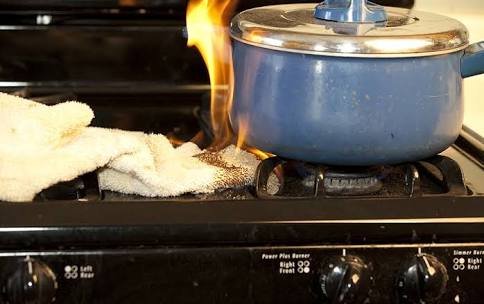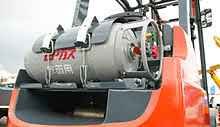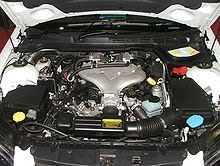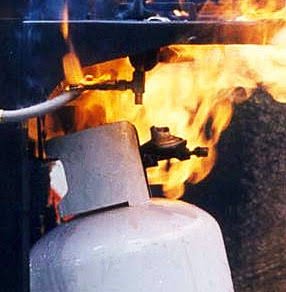What is LPG Gas? How & Why Would an LPG Cylinder Explode?
Liquefied petroleum gas or liquid petroleum gas (LPG or LP gas) is the pressure, the cooling fuel gas, the propane or the mutilation of these names and their mixture is indicated & ordered. It is usually used as a mixture of combustible hydrocarbon gas and fuel cooking, car and building temperature (HVAC).
LPG is used as a propylant gas and gradually increases as a refrigerant of the condenser device. It is being used as a substitute for CFC gas for different reasons. This prevents the atmospheric ozone-level corrosion. Whenever LG is used in the car, it is called Auto Gas.
After the invention in 1910 commercial production started in 1912. When it burns, there is no residue and sulfur does not emit, therefore, 3 percent of total energy energy is currently available in LPG. No water pollution or soil pollution is due to it being gaseous. Its calorific value is 46.1 mg / kg, which is 43.5 MJ / kg for Farnace oil for 42.5 MJ / kg petrol / gasoline. But its power density is much lower than 26 MJ / L in every single volume; Because its relative density is less than fennes oil (about 0.5-0.58 kg / L) and petrol / gasoline (0.71-0.77 kg / L).

source
The boiling gas of this gas, because the cells are below the temperature, are quickly absorbed into the air without any pressure. In order to increase the heat so that there is no explosion, the steel can be filled up to 80-85% instead of the maximum pressure level. Due to pressure, change in liquid gas and gaseous form is approximately 250 to 1 ratio This gas is liquid under a pressure called "Basavic pressure", which requires 220 kilo passacallic pressure for pure mutilation at 20 ° C and 2200 Kilo Pascal pressure is required for 50% temperature pure propane. LPG is not like natural gas, but because it is more mass than air, it can be in low base and basement. The danger lies in the exposure of fire after spreading with air, otherwise it can occupy oxygen space and prevent breathing due to lack of oxygen.
Use and cooking
.jpg)
source
LPG is used in many countries for cooking purposes, it is the first source of energy in the country as a fuel source. In India about 8.9 million tons of LPG is being consumed in the food from April to September 2016 (6 months) mainly in the domestic sector to cook. The number of domestic connections is 25 million (for example 1 connection per 6) with 350 million LPG cylinders in circulation. Most LPG requirements are imported. The piped city gas supply in India has not yet been developed on a larger scale. LPG is provided by the Government of India for domestic users, because of the increase in LPG prices has become a politically sensitive matter in India. since it affects the voting pattern of the middle class.
LPG was once a cooking fuel in Hong Kong. However, the use of LPG to reduce the expansion of the city's gas in new buildings is less than 24%, but reduces the residential units. However, other than electric, induction or infrared stoves; The only type of LPG-fuel stove available in most suburban villages and in many public housing estates.
LPG is the most common cooking fuel fuel in Brazil's urban area, which is being used by all families of exceptions including Rio de Janeiro and São Paulo's exceptional gas pipeline infrastructure. A government subsidiary of poor families (Vale Gass) is used specifically for achieving LPG.
LPG is commonly used for domestic cooking and exterior grilling in North America.
Easy availability
.jpg)
source
According to the study of 2010-2012, the proven reserves of natural gas (which are available in LPG) are known to be around 300 trillion cubic meters (10600 trillion cubic feet). Apart from this, another source is crude oil of mineral, which can explain its potential. The average growth rate of LPG production is around 2.2%, hence there is no danger of crisis.
Cylinder usage history
The history of cylinder production shows that in 1870-1880, carbon dioxide was first launched commercially.
Relative relations with natural gas with LPG gas

source
LPG is basically composed of a mixture of beeten and propane, on the other hand methane and ethane in the natural gas.
The LGPG system is being developed where SNG (synthetic natural gas) or natural gas, along with the local distribution and distribution network, provides services to more than 5000 households in the city. It was possible to reduce transportation costs in remote areas. It is known that the technology is now widely used in cities and towns of Japan.
LPG effect on the environment

source
Currently commercially used LPGs are being produced from fossil fuels. Because of this, it emits carbon dioxide. It produces carbon dioxide less than 50% less than coal in the production of electricity, and emits carbon dioxide equivalent to 81% and 70% of the mineral oil and coal for the production of kilowatt-hour power.
LPG other fossil fuel It causes less pollution because it does not contain any residue due to the burn.
Predatory Fires and Solutions
.jpg)
source
LPG is to be kept in the prepressed tank, all the refineries and gas plants are available in advance. The shape of the eagle is round and horizontally. Typically there are a number of companies to design and design their designs. In the United States, these types of clauses are formulated American Society of Mechanical Engineers (ASME).
Prepressor valves, a special way to pressure pressure in the prepressed tanks, are kept in order to avoid the danger of burning fire.
nice post @sagors
Important post. Its use is spread all over the world. Its importance is immense.